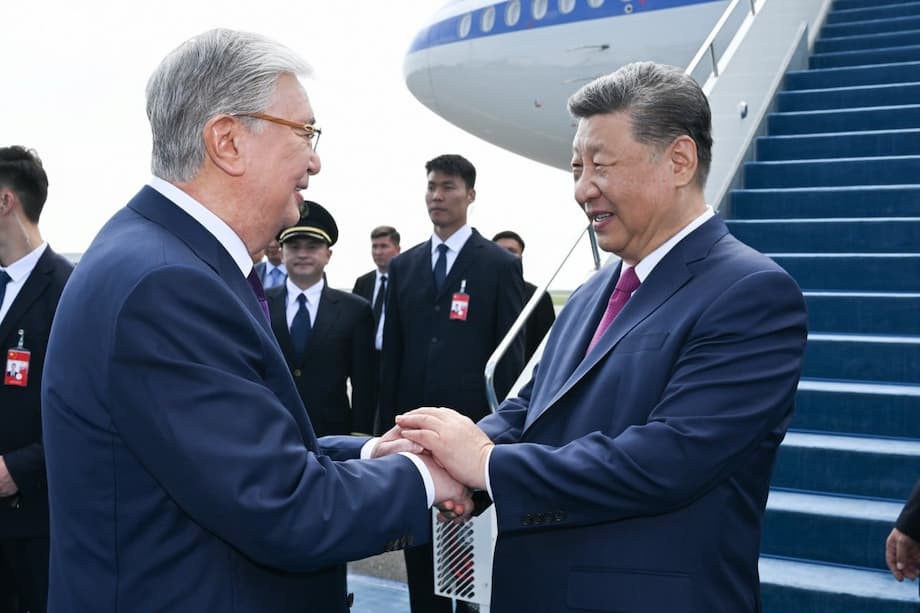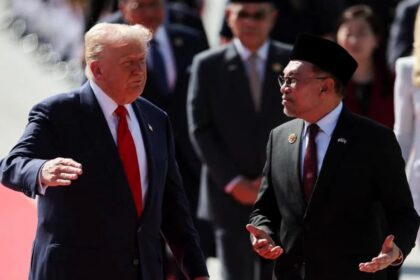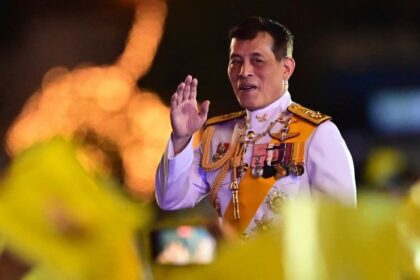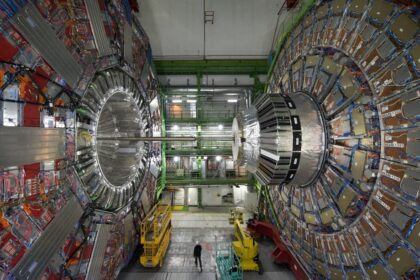China’s Belt and Road Initiative Accelerates in Central Asia
China’s Belt and Road Initiative (BRI) has entered a new phase in 2025, with a dramatic surge in investments targeting Central Asia. In the first half of the year alone, BRI-related investments and construction contracts reached a record $124 billion globally, with Central Asia emerging as a primary recipient. This strategic pivot is reshaping the region’s economic landscape, global resource markets, and the balance of power among major players such as China, Russia, and the West.
- China’s Belt and Road Initiative Accelerates in Central Asia
- Why Central Asia? The Strategic Rationale Behind China’s Investments
- How the Belt and Road Initiative Has Evolved
- Impacts on Central Asian Economies and Societies
- Geopolitical Shifts: Russia, the West, and China’s Expanding Role
- Broader Implications: Global Supply Chains and the Green Transition
- Challenges and the Road Ahead
- In Summary
At the heart of this shift is China’s drive to secure critical mineral resources—especially aluminum and copper—amid growing concerns about global supply chain vulnerabilities and potential trade restrictions from the United States. Kazakhstan, the region’s economic heavyweight, has become the focal point of Chinese investment, drawing $23 billion in the first six months of 2025, including a landmark $12 billion aluminum complex led by the East Hope Group.
Why Central Asia? The Strategic Rationale Behind China’s Investments
Central Asia’s significance for China is rooted in geography, resources, and geopolitics. The region, comprising Kazakhstan, Kyrgyzstan, Tajikistan, Turkmenistan, and Uzbekistan, sits at the crossroads of Europe and Asia and is rich in minerals, energy, and agricultural potential. Since the collapse of the Soviet Union, these countries have sought to diversify their partnerships, reducing reliance on Russia and welcoming new economic opportunities.
China’s BRI, launched in 2013 in Kazakhstan’s capital Astana, was initially focused on building roads, railways, and power plants to enhance connectivity. Over time, the initiative has evolved, with a growing emphasis on resource extraction, renewable energy, and technology. This evolution reflects both China’s internal economic pressures—such as the need for stable supplies of industrial metals for its manufacturing and green energy sectors—and external factors, including the shifting global trade environment and the ongoing war in Ukraine.
Resource Security and Supply Chains
China’s recent investments in Central Asia are heavily concentrated in the metals and mining sector. In the first half of 2025, investments in metals and mining across BRI countries hit a record $24.9 billion, surpassing any previous full year since the initiative began. Kazakhstan alone accounted for $12 billion in aluminum and $7.5 billion in copper projects. These metals are vital for electric vehicles, renewable energy infrastructure, and high-tech manufacturing—industries at the core of China’s economic strategy.
Analysts see this as a calculated move to secure supply chains against potential disruptions, particularly as the United States and its allies consider tighter export controls on critical minerals. By investing directly in resource-rich neighbors, China reduces its exposure to global market volatility and strengthens its negotiating position in international trade.
Geopolitical Competition and Regional Influence
Central Asia is not just a resource hub—it is also a geopolitical battleground. For decades, Russia has maintained dominance in the region through historical ties and security alliances. However, Russia’s war in Ukraine has strained its capacity to engage in Central Asia, creating openings for China to expand its influence. The BRI serves as both an economic and diplomatic tool, allowing China to deepen ties while supporting the region’s efforts to diversify away from Moscow.
At the June 2025 China–Central Asia Summit in Astana, President Xi Jinping and the leaders of all five Central Asian republics signed a treaty to deepen economic, political, and infrastructure cooperation. This “Treaty on Eternal Good-Neighbourliness, Friendship and Cooperation” marks a significant step in strengthening mutual trust and strategic partnership. The summit also fast-tracked projects like the China-Kyrgyzstan-Uzbekistan Railway, further integrating the region into China’s economic orbit.
How the Belt and Road Initiative Has Evolved
Since its inception, the BRI has undergone significant transformation. In its early years, the initiative was dominated by large-scale infrastructure projects—airports, seaports, highways, and power plants—often built by Chinese state-owned enterprises. These projects aimed to boost trade connectivity and stimulate economic growth in partner countries.
Recent years, however, have seen a shift toward more diversified and strategic investments. According to the Green Finance & Development Center and Griffith Asia Institute, the share of BRI engagement in the transport sector has dropped to its lowest level (just 7.2%), while energy, metals and mining, and technology have surged. In 2025, energy accounted for 35% of BRI engagement, with metals and mining at 20% and technology at 13.3%.
This shift reflects China’s focus on the green transition—investing in solar power, electric vehicle batteries, and hydrogen—as well as its need for raw materials. Technology and manufacturing investments have more than doubled, reaching $23.2 billion in the first half of 2025. The BRI’s evolution also mirrors global trends, as foreign direct investment from other countries into emerging markets has declined, while Chinese overseas engagement has grown.
Private Sector and Financial Innovation
Another notable trend is the increasing role of private Chinese companies in BRI investments, particularly in technology and mining. For example, the dual listing of tungsten miner Jiaxin International Resources on the Hong Kong and Astana stock exchanges in 2025 highlighted new financial mechanisms and the growing internationalization of the Chinese yuan. Such innovations are deepening financial ties between China and Central Asia, while providing new avenues for capital raising and investment.
Impacts on Central Asian Economies and Societies
The influx of Chinese investment has brought significant benefits to Central Asian countries. Major projects create jobs, transfer technology, and modernize key sectors such as mining, energy, and agriculture. In Kazakhstan and Uzbekistan, Chinese firms are building solar and wind power plants, biomass facilities, and factories for wind turbines and solar panels. Investments in agriculture—such as deep grain processing and irrigation—are helping to boost productivity and food security.
Infrastructure projects, including new railways and logistics hubs, are improving regional connectivity and reducing trade costs. The China-Kyrgyzstan-Uzbekistan Railway, for instance, is expected to facilitate trade with Europe while bypassing Russia, giving Central Asian states more options and leverage in their foreign relations.
Debt, Dependency, and Sovereignty Concerns
Despite these benefits, the rapid expansion of Chinese investment has raised concerns about debt sustainability and resource sovereignty. Some countries, such as Kyrgyzstan and Tajikistan, are already heavily indebted to China, with external debt levels exceeding 25% of GDP. Critics warn of “debt trap” diplomacy, where countries risk losing control over strategic assets if they cannot repay loans.
There are also worries about environmental impacts, especially from large-scale mining projects, and about the long-term implications of deepening economic dependence on China. Central Asian leaders are keenly aware of these risks and are pursuing “multivector” foreign policies—balancing ties with China, Russia, and Western partners to maintain autonomy and maximize benefits.
Geopolitical Shifts: Russia, the West, and China’s Expanding Role
The geopolitical context of BRI investments in Central Asia is complex and dynamic. Russia’s war in Ukraine has weakened its regional engagement, allowing China to step in as the dominant economic partner. While Russia retains significant influence through security alliances and cultural ties, its focus on the war has limited its ability to counter China’s economic advances.
China’s approach is pragmatic and patient. It avoids direct confrontation with Russia, instead emphasizing economic cooperation and mutual benefit. At the same time, China’s investments in infrastructure and resource extraction are steadily increasing its leverage in the region. Central Asian states, for their part, are using the competition between Russia and China to their advantage, seeking to diversify their partnerships and attract investment from multiple sources.
Western Engagement and the Search for Alternatives
While the United States and the European Union have increased diplomatic engagement with Central Asia—such as through the C5+1 summit and new trade initiatives—their influence remains limited compared to that of China and Russia. Western partners offer alternative sources of investment and support for governance reforms, but the scale and speed of Chinese engagement are difficult to match.
Central Asian leaders are adept at navigating this complex environment, leveraging their strategic position to extract concessions and maintain independence. The region’s “multivector” diplomacy is likely to continue, as countries seek to balance the benefits and risks of deepening ties with China against the need for diversification and sovereignty.
Broader Implications: Global Supply Chains and the Green Transition
China’s resource-focused investments in Central Asia have far-reaching implications for global supply chains and the transition to green energy. By securing access to critical minerals such as aluminum, copper, and tungsten, China is positioning itself as a key player in the industries of the future—electric vehicles, renewable energy, and advanced manufacturing.
This strategy not only supports China’s domestic economic goals but also gives it greater control over global mineral pricing and supply chains. As demand for these resources grows, China’s dominance in Central Asia could reshape global markets and challenge the influence of Western and Russian competitors.
At the same time, the integration of mining projects with transportation and energy infrastructure is creating new economic corridors linking China, Central Asia, and Europe. These corridors are expected to facilitate trade, boost regional development, and enhance connectivity across the Eurasian continent.
Challenges and the Road Ahead
Despite the impressive scale of Chinese investment, challenges remain. Central Asian publics are sometimes skeptical of China’s intentions, fearing loss of sovereignty, environmental degradation, and cultural erosion. Protests against Chinese projects have occurred in countries like Kyrgyzstan, reflecting concerns about transparency and local benefits.
Environmental and social standards are becoming increasingly important, as both China and host countries seek to ensure that projects are sustainable and beneficial for local communities. The Green Finance & Development Center recommends focusing on financially sustainable projects, supporting partner countries with debt issues, and increasing international cooperation to address these challenges.
Looking forward, the trajectory of BRI investments in Central Asia will depend on a range of factors, including global economic conditions, the outcome of the war in Ukraine, and the evolving balance of power among China, Russia, and the West. What is clear is that Central Asia will remain a key arena for strategic competition and cooperation in the years to come.
In Summary
- China’s Belt and Road Initiative has surged in Central Asia, with record investments in 2025 focused on metals, mining, and infrastructure.
- Kazakhstan is the main recipient, attracting $23 billion in the first half of 2025, including a $12 billion aluminum complex.
- The shift reflects China’s need for resource security, supply chain stability, and strategic influence amid global uncertainty.
- Central Asian countries benefit from economic growth and technology transfer but face concerns about debt, dependency, and sovereignty.
- Geopolitical competition with Russia and limited Western engagement shape the region’s diplomatic landscape.
- China’s investments are reshaping global supply chains and supporting the green transition, with lasting impacts on regional and global dynamics.
- Challenges remain around debt sustainability, environmental standards, and public perception, but Central Asia’s strategic importance is set to grow.












